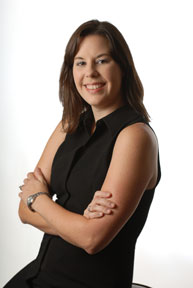
I grew my first garden this year. I had always thought it would be fun to try my hand at it, so my sister and I teamed up to see if we inherited our grandmother’s green thumb (sorry, mom … well, you know …).
I became even more interested in growing my own produce after reading about the work of anthropology professor Dr. Brian Campbell. Last year, he was awarded a faculty research grant supported by annual funds donated to the UCA Foundation for a project titled, “Eating Locally: The 100-Mile Diet.” This project was based on the principle of eating foods grown within a 100-mile radius of an individual’s home. Campbell believed the 100-mile diet would positively impact Arkansas farmers who are struggling to make a living. He also thought consumers would benefit by eating healthy local food that will support the regional economy.
I was intrigued with the idea, so I went online to find out more about the 100-mile diet concept. I read about individuals who had to give up some of their favorite foods – peanut butter, for instance, because they lived in a region where peanuts weren’t grown. It may sound extreme, but it was interesting to see how these people coped and found sometimes found alternatives – some of which they liked better than what they had before and some they didn’t.
As intriguing as it sounded, I wasn’t quite ready to take on a 100-mile diet, but I did make some changes in my lifestyle that led to some new adventures – like planting my first garden.
Now, my sister and I don’t know much about gardening, so we went to the local hardware store, purchased a variety of 99-cent seed packets. We pushed the seeds down in some seed pots and, lo and behold, within a few weeks we had little seedlings ready to be planted. We had the basics for this neck of the woods: tomatoes, cucumbers, peppers, squash and okra.
From the time I planted the seedlings in my raised garden bed, I checked on them every day. It was a miracle to see those little seeds sprout up, get blossoms and eventually produce some veggies that we could pick and eat. Those ripe, juicy tomatoes and flavorful banana peppers made all those evening watering sessions worthwhile.
Still intrigued by Dr. Campbell’s research, I visited with him during the spring and again over the summer. It was then that he told me about a different project of his – seed preservation. He helped me understand the difference in types of seeds and why we should care about the work he and others are doing to save open-pollinated seeds that have been passed down from generation to generation. He has even shared the steps for saving heirloom tomato seeds, so click here and check out this professor’s important work, and maybe you will become a part of that growing interest.




